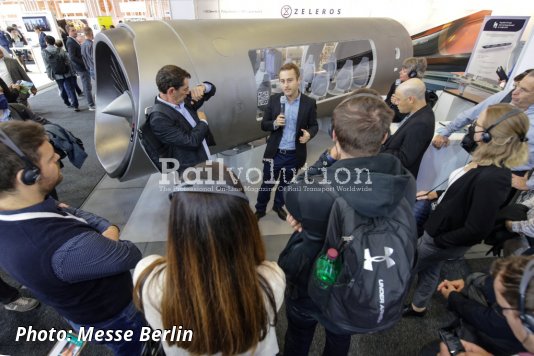News
filtered by: tags.tag Hyperloop Filter by category Filter by tag
- 16Ev 12
- 189 4
- 2050.LAB 7
- 2ES5S 3
- 2ES6 8
- 2ES6A 5
- 2ES7 8
- 2ES8 5
- 2TE25KM 12
- 2TE35A 9
- 363.5 3
- 380 10
- 390 3
- 3ES5S 3
- 3ES8 6
- 3TE25K2M 5
- 3TE28 8
- 443 3
- 480 3
- 483 4
- 484 4
- 555 12
- 561 3
- 61-4523 3
- 665 5
- 777 17
- 847 3
- accident 4
- Adessia 3
- Adif 19
- ADY 10
- Aeroexpress 8
- Akiem 22
- Alpha Trains 23
- Alstom 296
- Alternative energy 4
- Ampz 3
- Amtrak 5
- Angel Trains 7
- AnsaldoBreda 3
- APM 4
- ArcelorMittal 5
- Arenaways 4
- ARF 10
- ARRIVA 15
- ARRIVA vlaky 7
- Artic 7
- ASTRA Vagoane 4
- ATM 4
- ATO 6
- Avanti West Coast 8
- AVE 6
- Avenio 9
- Aventra 8
- AVG 3
- AVLO 3
- Avril 12
- AWT 8
- Baden-Württemberg 4
- Baltiets 3
- Bane NOR 6
- BCh 9
- BDZ 15
- Beacon Rail 9
- BEG 10
- BEMU 54
- Bison 6
- BLS 5
- Blues 3
- BMZ 43
- Bombardier 176
- BORCAD 3
- Bratislava 3
- Budamar 8
- BVG 5
- CAF 81
- Capricorn 6
- Captrain 8
- Cargonet 3
- CARGOUNIT 6
- CBTC 6
- ČD 158
- ČD Cargo 51
- CER 4
- CFL 12
- CFL Cargo 5
- CFR 3
- Chalupki 3
- Charger 4
- China 7
- China Railway 4
- Citadis 19
- Citylink 10
- Civity 15
- Coach 121
- Comfortjet 13
- Continental 3
- Coradia 69
- Coradia Stream 31
- coupling 3
- CPK 12
- CRRC 56
- CZ LOKO 58
- DAC 7
- DB 141
- DB Cargo 11
- DE18 12
- Desiro 56
- Desiro HC 4
- DJJ 12
- DLR 4
- DM 20 3
- DMU 72
- DMZ 25
- DPO 10
- DPOV 3
- Dr19 3
- Dragon 23
- DSB 13
- EDMU 25
- EffiLiner 6
- EffiShunter 32
- EG2Tv 5
- Egypt 6
- EHMU 3
- EKZ 6
- Electrostar 8
- Elektriraudtee 4
- ELF 7
- Elga-Trans 3
- ELL 30
- ELP 18
- Elron 9
- EMKA 4
- EMR 3
- EMU 579
- ENR 29
- EP Cargo 6
- EP20 3
- EP2D 15
- EP2DM 4
- EP3D 6
- Ermewa 5
- ERTMS 4
- ES104 5
- ES64U4 3
- ETCS 60
- ETR 1000 6
- EURO4001 4
- EURO6000 11
- EURO9000 14
- EURODual 32
- EuroLight 6
- European Sleeper 4
- Eurosprinter 7
- Eurostar 20
- EVB 3
- Eversholt 3
- Evolution 12
- EvroKhim 3
- EXPO 1520 3
- FeliX 4
- FGC 6
- Flexity 16
- FLIRT 128
- FLIRT AKKU 12
- FLIRT H2 3
- FLIRTNEX 3
- FlixTrain 7
- Flytoget 5
- FNM 9
- ForCity 27
- FPK 12
- FPS 7
- FRACHTbahn 3
- Frecciarossa 3
- FS 5
- Fuxing 3
- FV-Dosto 3
- G 6 4
- G1 3
- Gama 11
- Gazpromtrans 3
- GBRf 13
- GE 12
- Giruno 5
- Go-Ahead 9
- Göteborg 10
- Göteborgs Hamn 8
- Govia 3
- GPX 3
- Granit 10
- Greater Anglia 4
- Green Cargo 29
- Griffin 17
- GTLK 4
- GTR 11
- GTW 16
- GTW 2/6 5
- GYSEV 8
- H2 5
- HEMU 3
- Herrenknecht 6
- HHLA 6
- HHPI 3
- Hitachi 39
- HKL 3
- HMU 33
- HS2 112
- HSE 3
- HSL 13
- Hübner 13
- HVLE 4
- Hydrogen 5
- Hyperloop 17
- Hyundai 4
- ICE 25
- ICNG 8
- ICx 3
- IDS Cargo 3
- Ile-de-France 6
- iLint 10
- Impuls 8
- Indian Railways 12
- Innofreight 9
- InnoTrans 93
- Inspiro 11
- InterJet 6
- InterRail 4
- IRSI 3
- Iryo 8
- ISR 5
- ITL 4
- Ivolga 13
- Japan 41
- JR East 10
- Kawasaki 3
- Keolis 10
- Kiepe 3
- Kinki Sharyo 6
- Kintetsu 3
- KISS 72
- KM 6
- Knorr-Bremse 12
- Kraków 3
- KTZ 29
- KVSZ 3
- KZ 8
- KZ4AT 5
- KZ8A 8
- Lajkonik 3
- Lastochka 27
- Laude 9
- LEO 23
- Liebherr 17
- Lineas 9
- LINK 23
- LINT 9
- LKZ 10
- LNVG 9
- locomotive 519
- LOTOS Kolej 4
- LTE 5
- LTG 3
- LTG Cargo 3
- LTZ 16
- LU 4
- Łódź 3
- M7 5
- Malakhit 6
- Mariazellerbahn 3
- MÁV 20
- Medway 5
- Mercitalia 6
- Merseyrail 16
- METRANS 25
- Metro 99
- Metro Warszawskie 5
- Metropolis 3
- Metrovagonmash 19
- Mireo 35
- Mireo Plus B 5
- Mitsubishi 4
- Modula 3
- Moskva 8
- MOvia 6
- MPK Krakow 9
- MPV 3
- MRCE 6
- MSC 4
- MSK 4
- MSV elektronika 3
- MVM 6
- N700S 3
- NAH.SH 5
- NCRTC 4
- NEB 5
- Network Rail 3
- NEVZ 22
- Newag 48
- Nexrail 4
- Nexus 24
- Nightjet 19
- NIM Express 13
- NJT 3
- NMU 37
- Norske Tog 12
- Northrail 9
- nOVA 4
- NÖVOG 4
- NS 22
- Nymwag CS 6
- Oaris 7
- ÖBB 83
- Oberpfalzbahn 4
- ODEG 6
- OEVRZ 3
- OMNEO 7
- ONCF 3
- Operail 3
- Orlen 3
- OUIGO 7
- OVK 43
- Oxygène 3
- OŽ 3
- Panter 10
- Pardubice 3
- Paribus 6
- Pars nova 4
- Pasažieru vilciens 15
- PCC Intermodal 4
- Pendolino 22
- PESA 67
- PJM 19
- PKP Cargo 22
- PKP Cargo International 3
- PKP IC 37
- PKP Intercity 7
- Plasser & Theurer 7
- POIiŚ 11
- POLREGIO 3
- Porterbrook 8
- PRAHA 3
- Prima 16
- Pro//Motion.Expo 9
- Przewozy Regionalne 3
- PSŽ 5
- RA3 6
- Rail Cargo 6
- Rail Force One 3
- Rail Operations (UK) 3
- RailAdventure 8
- railjet 24
- Railpool 35
- RATP 10
- RBD 6
- RCH 4
- Re 421 4
- Regio160 4
- RegioFox 3
- RegioJet 72
- Régiolis 6
- RegioPanter 47
- RegioShark 4
- RENFE 46
- RER 5
- Retrack 3
- RhB 11
- rnv 3
- road2Link 3
- roadrailLink 3
- ROG 5
- ROUK 3
- RRTS 4
- RRX 4
- RSL 9
- RTA 10
- RTB CARGO 5
- RTS 5
- RZD 164
- S-Bahn Berlin 4
- S-Bahn München 3
- S700 3
- Sakhalin 3
- SALi 4
- Samara 3
- Sapsan 7
- SAR 3
- SBB 29
- SBB Cargo International 4
- SBCTA 5
- Schaeffler 3
- SD-KD 3
- servicejet 4
- SFBW 3
- Shcherbinka 10
- Shinkansen 13
- Siedlce 30
- Siemens 457
- SilkWay 3
- Sinara 57
- Sirius 16
- SJ 5
- Škoda 184
- Smartron 8
- SMILE 3
- Snälltåget 3
- SNCB 13
- SNCF 48
- Sofia 10
- Softronic 8
- Správa železnic 11
- Srbija voz 10
- SSAB 4
- Stadler 412
- Subterra 3
- SWEG 3
- SWING 4
- SŽ 10
- Talbot-Services 3
- Talent 9
- Talgo 46
- Tampere 6
- Tampereen Ratikka 3
- Tango 12
- Tashkent 4
- Tatravagónka 11
- Taurus 27
- TBM 4
- TCDD 9
- TEM11A 3
- TEM18DM 6
- TEM23 8
- TEM9 4
- TEŽ 6
- TfL 7
- TfW 19
- TGV 23
- Thalys 3
- Thameslink 4
- TINA 6
- TMH 224
- Tokyo metro 5
- Toshiba 3
- TPE 6
- TR Trans Rail 4
- Trainpoint Norway 3
- TRAKO 14
- Tram 123
- tram-train 8
- Tramlink 8
- Transitio 9
- Transmash 4
- Transmontana 7
- Transtech 3
- TRAVCA 3
- TRAXX 119
- Trenitalia 23
- TSA 14
- TSB 3
- TSL-ESCHA 3
- TsPPK 17
- Tulpar-Talgo 4
- TVZ 60
- TWINDEXX 10
- Twist 3
- TX Logistik 5
- UBTZ 4
- UK 22
- Ukraine 14
- UL 57
- Unipetrol Doprava 5
- Uralskie lokomotivy 11
- Urbos 11
- UVZ 3
- UWC 5
- UZ 18
- VAG 12
- Västtrafik 6
- VDV 3
- Vectrain 4
- Vectron 212
- Vectron DM 5
- Velaro 26
- Velaro UK 6
- Venture 3
- Viaggio 42
- VMS 3
- Voith 17
- Vossloh 29
- Vossloh Locomotives 10
- Vossloh Rolling Stock 13
- Voyager 3
- VR 17
- VRR 3
- VTG 19
- VÚKV 5
- VUZ 72
- Wabtec 5
- WAG12 4
- wagon 104
- Wascosa 4
- Wegberg-Wildenrath 13
- WESTbahn 13
- Wien 3
- Wiener Linien 10
- WINDHOFF 3
- WINK 8
- WL 3
- WLC 5
- X-Wagen 9
- X’Trapolis 5
- Yermak 16
- Zefiro 14
- ZF 5
- ZhDYa 3
- Źmigród 28
- ŽOS Vrútky 7
- ŽOS Zvolen 3
- ŽRSM Transport 4
- ŽSR 4
- ZSSK 46
- ZSSK CARGO 8
- ZVMS 5
- ŽZO 21
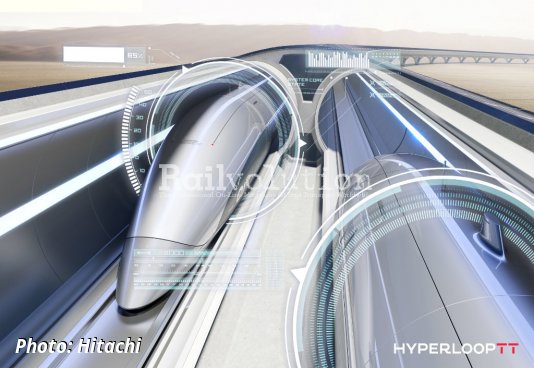
Hitachi: The Hyperloop Capsule To Be Tested Using Digital Signalling Software In The Cloud
Although the Hyperloop system is technically and physically nonsense, there are more and more companies getting involved in this project...

HyperloopTT And HHLA Present HyperPort
On 6 July 2021, HHLA announced that together with HyperloopTT it will present a virtual reality demonstrator at the ITS World Congress.
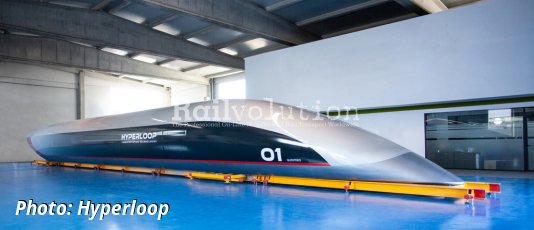
Hyper-Miracle? Or Hypeloop? (5)
The conclusions reached in our series of articles The Train-In-A-Vacuum-Tube Fantasy demonstrated that the use of Hyperloop technology for passenger transport is impractical and contradicting the laws of physics. Nevertheless, it is remarkable how many Hyperloop projects are now being prepared, on a worldwide scale.
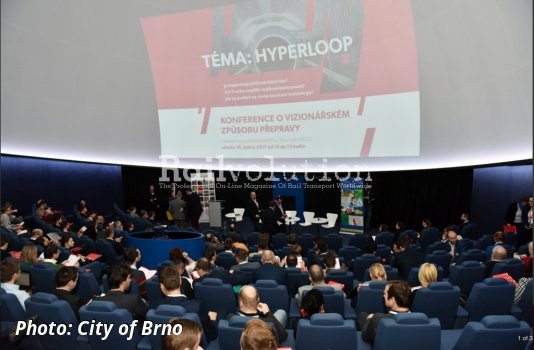
Hyper-Miracle? Or Hypeloop? (4)
The conclusions reached in our series of articles The Train-In-A-Vacuum-Tube Fantasy demonstrated that the use of Hyperloop technology for passenger transport is impractical and contradicting the laws of physics. Nevertheless, it is remarkable how many Hyperloop projects are now being prepared, on a worldwide scale.
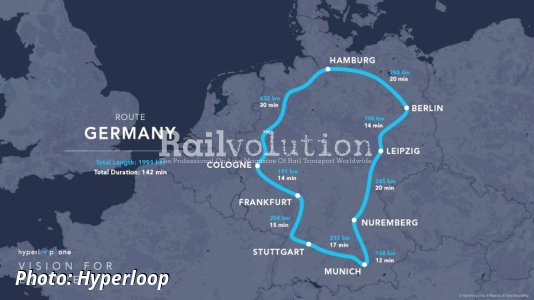
Hyper-Miracle? Or Hypeloop? (3)
The conclusions reached in our series of articles The Train-In-A-Vacuum-Tube Fantasy demonstrated that the use of Hyperloop technology for passenger transport is impractical and contradicting the laws of physics. Nevertheless, it is remarkable how many Hyperloop projects are now being prepared, on a worldwide scale.

Hyper-Miracle? Or Hypeloop? (2)
The conclusions reached in our series of articles The Train-In-A-Vacuum-Tube Fantasy demonstrated that the use of Hyperloop technology for passenger transport is impractical and contradicting the laws of physics. Nevertheless, it is remarkable how many Hyperloop projects are now being prepared, on a worldwide scale.
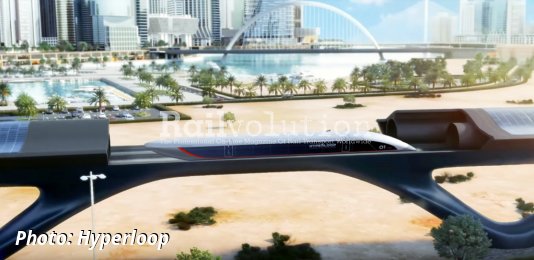
Hyper-Miracle? Or Hypeloop? (1)
In the preceding series of articles The Train-In-A-Vacuum-Tube Fantasy we examined the laws of physics which govern transport within vacuum tubes. The conclusions reached demonstrated succinctly that the use of Hyperloop technology for passenger transport is impractical, contradicting the laws of physics and raising many issues which appear to lack feasible solutions. Nevertheless, it is remarkable how many Hyperloop projects are now being prepared, on a worldwide scale.
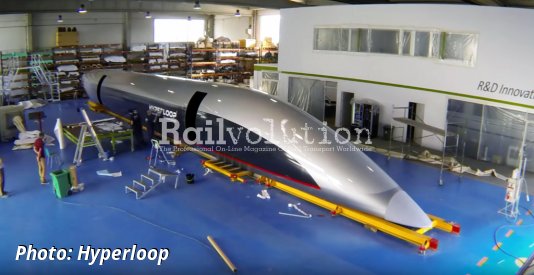
Hyperloop - The Train-In-A-Vacuum-Tube Fantasy (9)
Since 2012 the global media have been intrigued by Hyperloop, a revolutionary concept enabling passenger- and freight-carrying vehicles to move through hermetically-sealed vacuum tubes, at speeds of between 1,100 and 1,200 km/h. It is worthwhile, therefore, for us to undertake a critical examination of some of the technical characteristics of the Hyperloop idea.
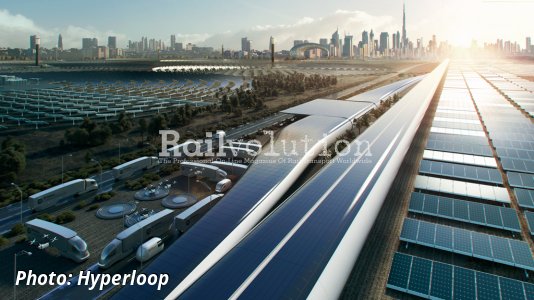
Hyperloop - The Train-In-A-Vacuum-Tube Fantasy (8)
Since 2012 the global media have been intrigued by Hyperloop, a revolutionary concept enabling passenger- and freight-carrying vehicles to move through hermetically-sealed vacuum tubes, at speeds of between 1,100 and 1,200 km/h. It is worthwhile, therefore, for us to undertake a critical examination of some of the technical characteristics of the Hyperloop idea.
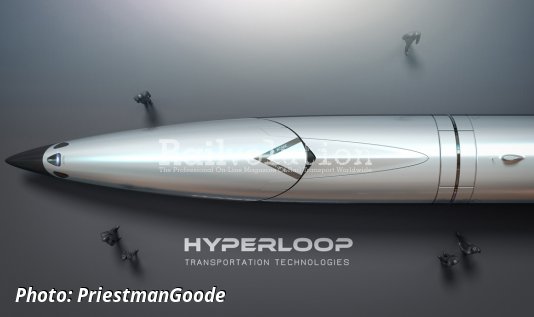
Hyperloop - The Train-In-A-Vacuum-Tube Fantasy (7)
Since 2012 the global media have been intrigued by Hyperloop, a revolutionary concept enabling passenger- and freight-carrying vehicles to move through hermetically-sealed vacuum tubes, at speeds of between 1,100 and 1,200 km/h. It is worthwhile, therefore, for us to undertake a critical examination of some of the technical characteristics of the Hyperloop idea.

Hyperloop - The Train-In-A-Vacuum-Tube Fantasy (6)
Since 2012 the global media have been intrigued by Hyperloop, a revolutionary concept enabling passenger- and freight-carrying vehicles to move through hermetically-sealed vacuum tubes, at speeds of between 1,100 and 1,200 km/h. It is worthwhile, therefore, for us to undertake a critical examination of some of the technical characteristics of the Hyperloop idea.
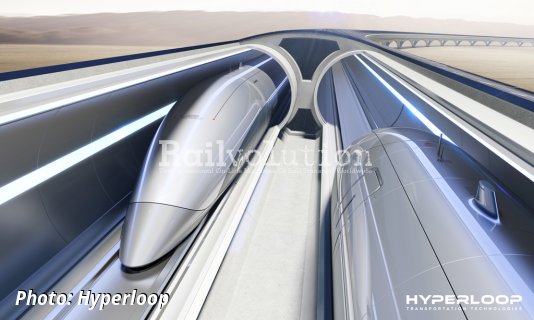
Hyperloop - The Train-In-A-Vacuum-Tube Fantasy (5)
Since 2012 the global media have been intrigued by Hyperloop, a revolutionary concept enabling passenger- and freight-carrying vehicles to move through hermetically-sealed vacuum tubes, at speeds of between 1,100 and 1,200 km/h. It is worthwhile, therefore, for us to undertake a critical examination of some of the technical characteristics of the Hyperloop idea.
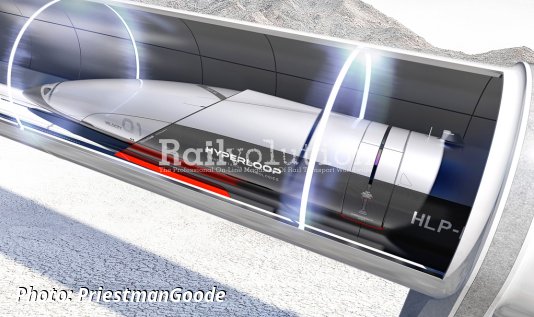
Hyperloop - The Train-In-A-Vacuum-Tube Fantasy (4)
Since 2012 the global media have been intrigued by Hyperloop, a revolutionary concept enabling passenger- and freight-carrying vehicles to move through hermetically-sealed vacuum tubes, at speeds of between 1,100 and 1,200 km/h. It is worthwhile, therefore, for us to undertake a critical examination of some of the technical characteristics of the Hyperloop idea.
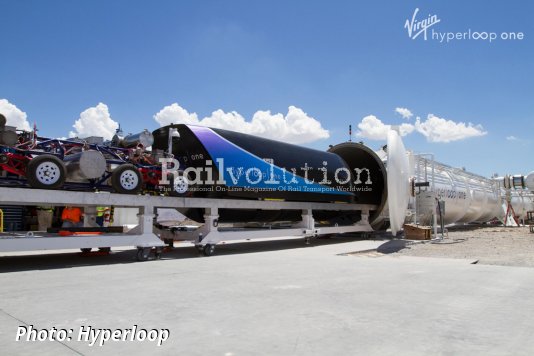
Hyperloop - The Train-In-A-Vacuum-Tube Fantasy (3)
Since 2012 the global media have been intrigued by Hyperloop, a revolutionary concept enabling passenger- and freight-carrying vehicles to move through hermetically-sealed vacuum tubes, at speeds of between 1,100 and 1,200 km/h. It is worthwhile, therefore, for us to undertake a critical examination of some of the technical characteristics of the Hyperloop idea.

